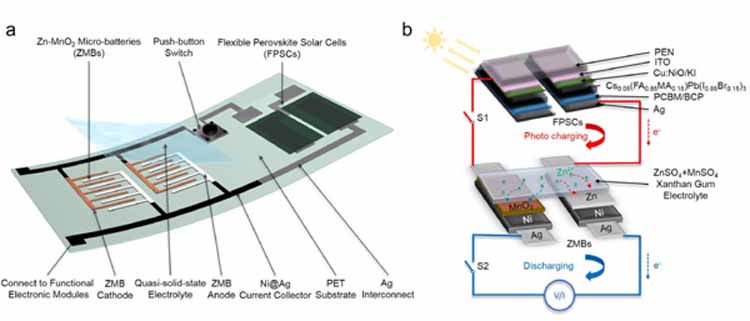Revolution in future smart watches a renewable and rechargeable battery prototype created by the Students from the University of Surrey might increase the energy life of future smartwatches and other wearables in just thirty seconds of sunshine.
The Advanced Technology Institute (ATI) displayed that its battery can reactivate itself without the use of a electricity or plug with in few seconds with the help of its novel photo-rechargeable technology, perovskite solar cells and zinc-ion batteries.
Miniaturized integrated flexible electronics have become very attractive for commercialization due to their unique characteristics, such as high flexibility, ultralightweight, conformality, and the promising potential in applications such as real-time health monitoring, intelligent interaction, now these devices can be self-charged when exposed in sunlight.
According to Jinxin Bi, a Ph.D. student at ATI and the paper’s first author, “this technology provides a potential technique for efficient use of clean energy and enables wearable devices to be run continuously without plug-in charging. Our prototype could pave the way for future interactions with wearables and other internet-of-things devices, such as remote real-time health monitors.”
Surrey’s environmentally friendly, photo-rechargeable system stands out due to the sleek and well-matched structural design of the integrated battery and solar cell, which enables it to display high energy and volume density similar to cutting-edge microbatteries and super capacitors.
“This project is an example of how the University of Surrey is dedicated to producing research and innovation that equips humanity with the knowledge, tools, and technologies to help us live better and more sustainable lives,” says Dr. Wei Zhang, project co-lead and ATI expert in perovskite solar cells.
Dr. Yunlong Zhao, project co-lead and expert in batteries for wearables and implantables from the ATI, says that “the unique features in our ultrafast photo-rechargeable system could promote wide applications in self-powered wearable internet-of-things, autonomous power systems and emergency electronics. In addition, it will broaden the perception and insight of designing the next generation of miniaturized flexible photo-rechargeable systems.”
















